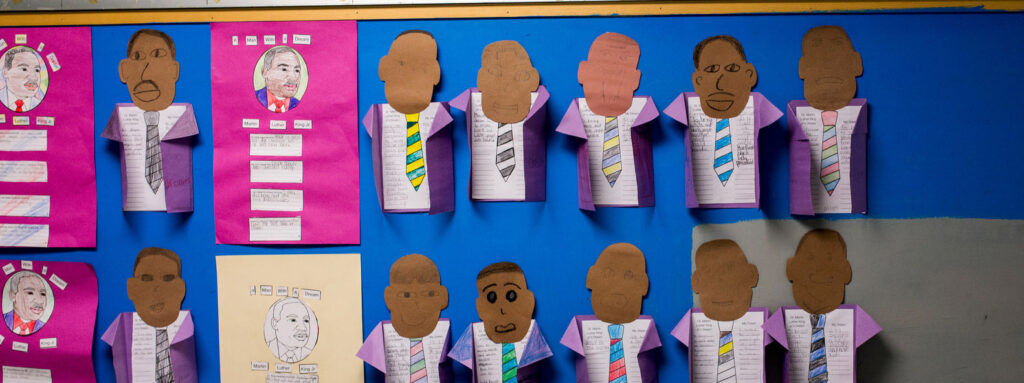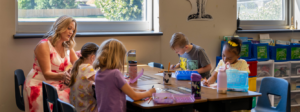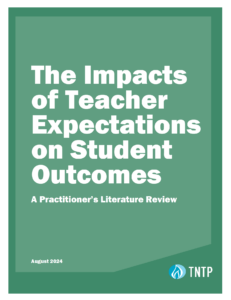This is the second of three posts about Literacy with Voice and Choice—a new approach to literacy instruction developed in partnership with Mott Haven Academy Charter School and Concourse Village Elementary School (CVES) in the Bronx. Read Part 1 and Part 3.
I knew Haven Academy by reputation before our project, but partnering with and learning alongside their team exceeded my high expectations for what our collaboration would be like.
Haven Academy’s mission is to create an educational experience for students navigating New York City’s vast foster care system that enables them to reach their full potential. Historically, our schools have not served foster-involved youth well. Kids whose families are navigating foster care are more likely to drop out of high school, less likely to matriculate to college and find a good-paying job, and are overrepresented in the prison population. In other words, it’s crucial that we provide better school experiences for these students.
Haven Academy initially piloted Literacy with Voice and Choice in 6th grade before scaling it schoolwide. Their approach to literacy is both focused on grade-level texts organized into topical units in ELA, and integrated across all core content areas (math, science, and social studies).
Reflecting on why her team decided to change their approach to teaching reading, Jessica Nauiokas, Haven Academy’s founder, shared: “We felt that while our ELA scores were good, they were plateauing, and we know our scholars are capable of more. From past experience, we knew that when it came to literacy, the texts we teach matter, and how we teach them matters just as much.”
Haven Academy’s teachers worked together with their school leaders to make student voice and choice a core component of their literacy approach.
“Students don’t want to be told, ‘This is how it is.’ They want to have a choice—even if it’s a small choice,” said Marcia Tineo-Vasco, who teaches 7th grade ELA at Haven. “Even something as simple as choosing an assignment puts the learning in their court. We want them thinking, ‘We’re giving you suggestions, but you still get to choose.’”
On a practical level, incorporating student voice and choice into literacy instruction means giving students a curated menu of options—not only in what they read, but how they read it. Students at Haven Academy all read the core text of their topical units, but along with that text they can choose from a variety of other topically aligned books. They’re also given activity choices like reading along with a discussion group, or reading on their own and completing quick comprehension checks via a Chromebook and a Google form.
You can see the benefits of this approach in the excitement of Kaden Kennedy, an eighth grader at Haven Academy, when he talks about his experience in ELA. As part of a unit from Wit & Wisdom focused on a Shakespeare play, Kaden was able to choose to read another play that might better connect to his lived experience and build his background knowledge on how plays are structured. Kaden chose Fences, August Wilson’s award-winning play about a Black family in 1950’s Pittsburgh. (A school leader helped teachers identify the text and develop grade-level activities for it.) Kaden was enthralled by the play and conducting character analysis. In his words, his literacy curriculum is “a big ball of knowledge” where each thing he reads builds on the next.
Haven Academy’s middle school principal Sarah Touma noted, “Kaden’s growth has been astronomical. His confidence is unreal! Because of this approach, Kaden’s teachers have been able to reach him on an individual level. Students are more excited and engaged as you let them be heard.”
Thoughtfully supplementing a rigorous, content-rich curriculum like Wit & Wisdom requires both expertise in what the standards expect of students and thoughtful consideration of what will be relevant for students. According to Ms. Nauiokas, “We want to think about who the characters are that get focused on, who the texts are written by, what have been the historical experiences of those characters, and what’s the demographic makeup of those characters. Each unit presents an opportunity to introduce new content for kids and connect back to the core ideas and themes that our school values.”
This type of personalization can help ensure students can see themselves and their experiences in what they’re reading and give them agency over their own learning. And for students, driving their learning experiences through curated, rigorous options provides both structure and ownership. As Ms. Nauiokas put it, “For a child who has lots of chaos in parts of their life they can’t control, they should have some agency and predictability to the part of their day that they can have control.”
Our key takeaway has been that voice and choice are critical for student engagement—even with great instruction built on a foundation of high quality instructional materials. Check back next week for a look inside Concourse Village Elementary School and their focus on content-rich literacy instruction.








